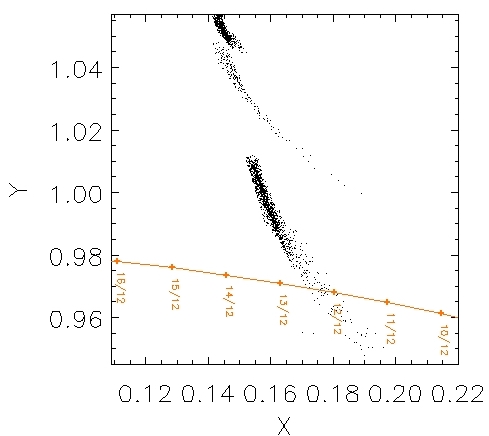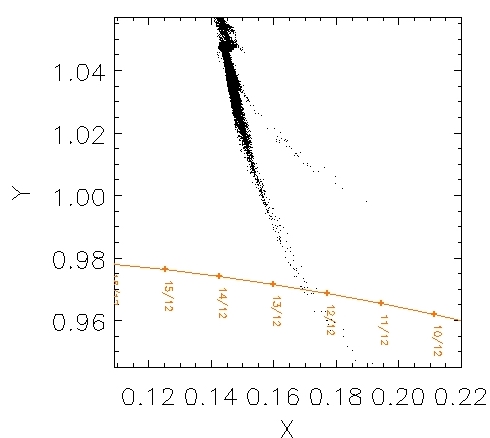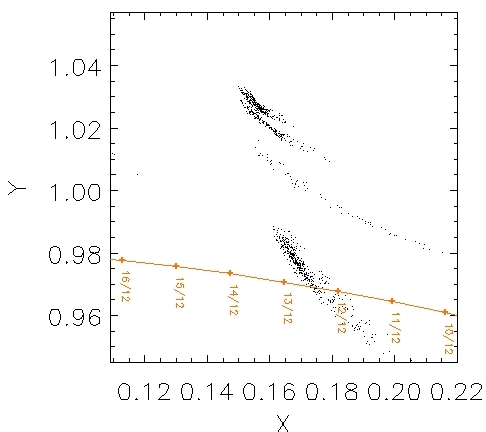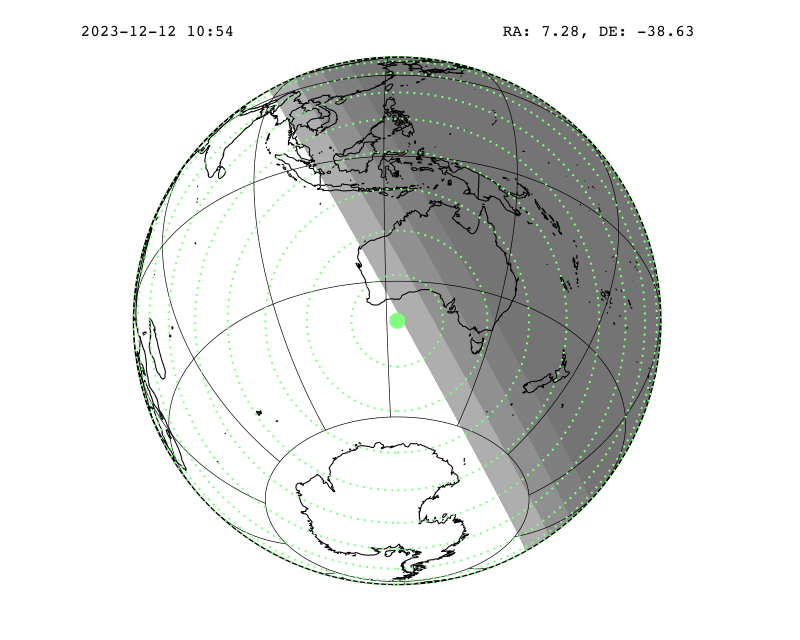A new meteor shower caused by comet 46P/Wirtanen
Introduction
Comet 46P/Wirtanen is known to be an near Earth object, but has never produced a meteor shower so far. A nice and quick overview is provided by Ye & Jenniskens (2022).
Since this comet was the initial target of the Rosetta spacecraft, we investigated the dynamics of its meteoroid stream in order to check if any encounter with the Earth in the coming years would likely occur or not. Using our good old model, we find that in the past years, the meteoroid stream ejected by 46P indeed never really crossed the path of our planet.
However, we did find an encounter in 2007, 2018 and especially 2023.


As can be seen in the above figures, the density of the trails is not very high, so no significant meteor display is expected. Although the whole stream is extremely dense as its core, only a small fraction of meteoroid ejected at specific comet passage (namely 1974 and 1980) are in the path of the Earth.
Encounter with the 1974 trail in 2023
In 2023, the situation is slightly different: meteoroids from the 1974 trail are, without a doubt, making it to the Earth, as showed in the figure below.

Since no meteor shower caused by comet 46P/Wirtanen has ever been detected, it is hard to derive the expected value of the level of the shower (ZHR). However, given the spatial density of the trail, no storm is expected.
Actually, the situation has some similarities with the 2021 Arids: potentially, observers can witness the birth of a new meteor shower, expected to peak on the 2023-12-12 at 10:14:00 UT. The radiant will be at RA=7.28 deg, DEC=-38.63. The geocentric velocity is of 10.25 km/s only, making the meteors appearing slow and dim (compared to fast ones, for a given meteoroid size). If the shower is observed, a possible name is lambda-Sculptorids (however, only the IAU is competent to name meteor showers)
The orbital cirumstances makes the shower observable from Oceania and South-East Asia.

Note that the presence of Geminids meteor is expected at this time of the year, The difference between the two showers can easily be done even by naked eye by paying attention to the radiant and velocity of the meteors.
All the details of the predictions and analysis can be found in this scientific paper.
Observations
Although the detection of such meteors was hindered by the sloc velocity, it was nevertheless observed by both amateurs and professionals of NZ and Australia. This CBET sums up the first reports.
Last update Monday 18 December 2023